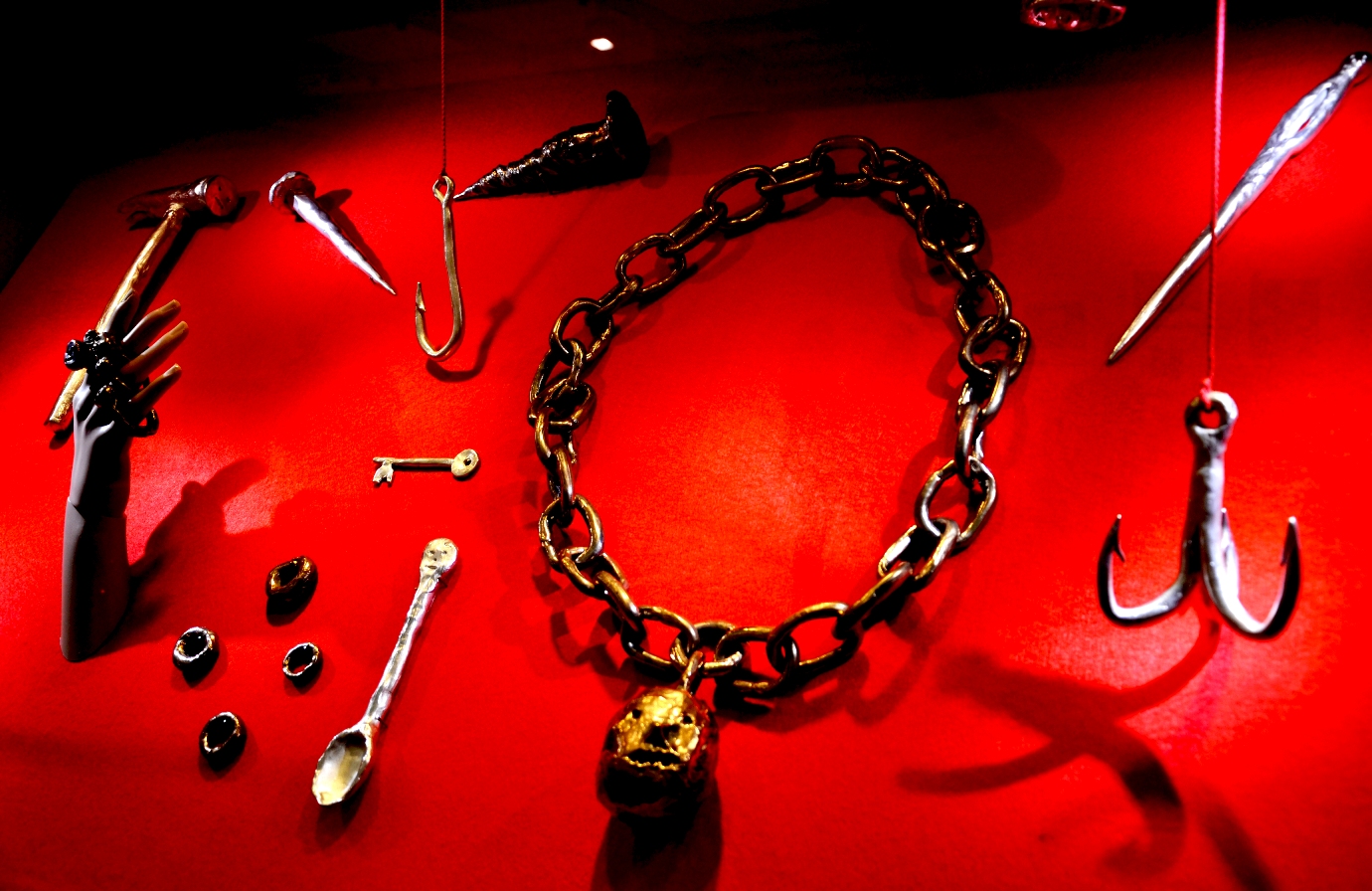Brain Activity at the Hayward Gallery: David Shrigley says “LOOK AT THIS!”

Born in Macclesfield in 1968, David Shrigley has lived in Glasgow since moving there to study Environmental Art at Glasgow School of Art in 1988. Brain Activity is his first complete survey of the UK and the largest Shrigley’s exhibition to date, comprising all of his working practices; his iconic drawings and text drawings, animations, photography, sculpture and spoken word. Curated by Clift Lauson and organised by Jessica Cerasi, Brain Activity at the Hayward Gallery is one of the best solo exhibition of a modern artist to come to London in a very long time.
Everything that’s great about David Shrigley is at the Hayward right now. This exhibition demonstrates Shrigley’s fascination with the direct, the childish, the darkly comic and the magical. His desire to ‘communicate as directly as possible’ comes across but as the title of the exhibition would suggest, there’s plenty to mull over too.
A segment of spoken-word piece Monkeys plays in the lift to the Upper Gallery. Throughout the exhibition halls, tiny pieces at floor-level, sometimes without title signs, are easy to pass-by. The balcony has been utilised for two bronze sculptures, also easily overlooked, one is a typically Shrigley word piece ironically stating ‘LOOK AT THIS’. The thorough use of the space is honest to Shrigley’s Environmental Art background, which encouraged interaction and engagement with space. Dead Rat in particular (look out for a taxidermy rat lying beneath one of the gallery dividers) reminds us of Shrigley’s practical joke street art pieces such as the Lost Pigeon.
The sculptural and taxidermy pieces are some of the most interesting in the exhibition, some comically direct and others surreally off-kilter. Very Large Cup Of Tea, one of the exhibitions many new commissions, is constructed of ‘Glazed ceramic, tea, milk, no sugar’. Ostrich on the other hand, as a headless taxidermy ostrich, derives comedy from the way the ostrich’s most famous characteristic (losing its head in the sand) is here the very thing that makes it strange. A lot of Shrigley’s work plays around with this principal. Animated works Sleep and Ones create a cumulative ‘Why did the chicken cross the road?’ narrative, messing with expectation and anti-climax.
There is a satisfyingly large collection of Shrigley’s most iconic and recognised media, with 42 acrylic paintings and 116 drawings. Together, these show the directness of Shrigley’s style in pieces such as This is Nothing, a direct reference to Magritte’s Ceci n’est pas une pipe. In fact, the exhibition is scattered with Shrigley’s nods to, inversions and literalised versions of other artists’ works, Sleep a reference to Andy Warhol’s live action film of the same name and Lightswitch referring to Martin Creed’s Turner Prize winning The Lights Going On and Off. There is a sense, though, that these references are meant in jest and with respect; they are interpretations which may provoke mockery towards the originals, but do not seek to encourage it.
The darker side of Shrigley’s characters comes across in the collected drawings, which confront the carnivalesque and macabre elements often inherent to childish interests. Many drawings seem to draw dark comedy from childish themes given edge by adult hindsight. Some characters are grotesque and peripheral, obscure and usually unseen, like fairy-tale monsters. Other pieces such as The Contents Of The Space Between The Cooker and The Refrigerator turn this adult scepticism on its head, by placing something magical, colourful and surreal into one of the most mundane places imaginable. In this piece there is a sense that wonderful, innocent and imaginative things fill the gaps of life. The unseen can be bright and brilliant, not just dark and creepy. The adult and the child-like are also brought together in a number of pieces such as photograph Fork, which create humour from overt double-entendre – another recurrent theme through the exhibition.
This is a spectacularly coherent and broad exhibition that showcases the sweep of David Shrigley’s career from the mid-90s through to the present. Best known for the comic effect of his work, Brain Activity encapsulates this element without limiting the exhibition as a whole. Visiting Brain Activity is an entertaining and fun experience, but also an incredibly stimulating one. An enormous poster covers the side of the Southbank Centre, urging us to ‘Fight The Nothingness’: characteristically direct and honest, this exhibition is a way to do that.
Abigail Moss
Photos: VJ Von Art
Brain Activity is at the Hayward Gallery, Southbank until 13th May 2012. For further information about David Shrigley click here. For information about the exhibition visit the Hayward Gallery’s website here.


















Facebook
Twitter
Instagram
YouTube
RSS